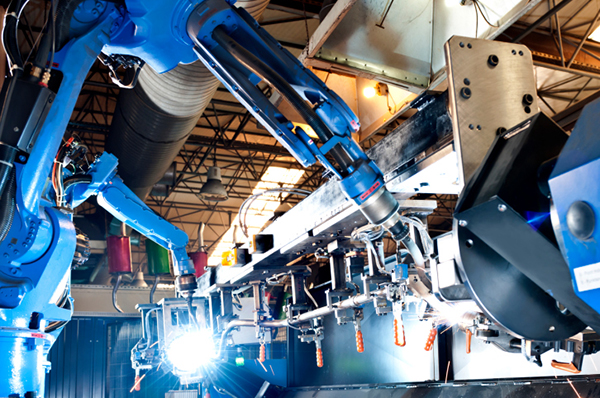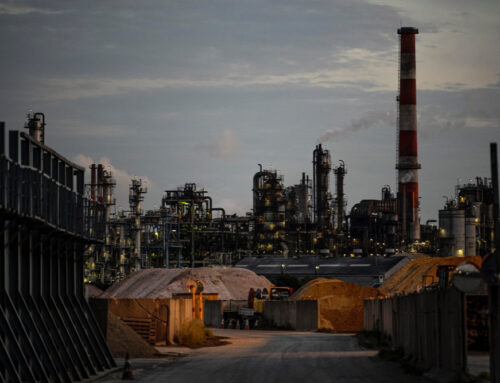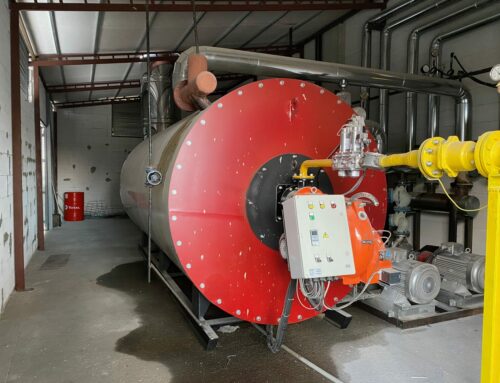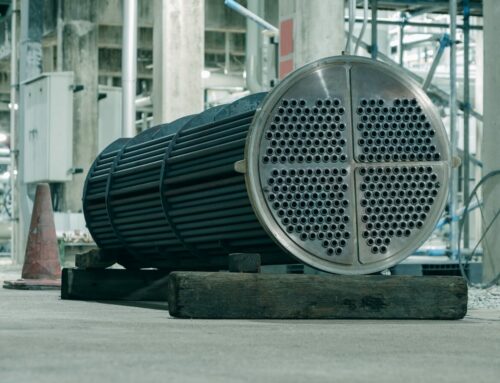The foundations of industry in Turkey were laid by the state in the early years of the Republic. Most of the organizations established with the first development plans implemented in the country were for consumer goods. However, some facilities to produce intermediate goods were also included and were put into practice to provide industrial opportunities over time. The manufacturing sector started to develop thanks to the packages of measures including incentives offered with grants from time to time.
After 1970, industrial machinery and equipment manufacturing started to gain an important place among industrial sectors. It was affected by the crises that occurred over time. However, especially after 2003, it was revitalized as a result of the restructuring of the companies that managed to survive in order to adapt to the conditions. As of 2010, it gained momentum and started to grow again.
Industrial machinery and equipment manufacturing also has an important place in the manufacturing industry, which provides products to all sectors. The manufacturing industry works together with the service sector. While it receives support from the service sector, it also contributes to the service sector. In developed economies, the share of the manufacturing sector in the service sector is between 22% and 27%.
The increase in the trade of industrial products and the speed of product transfer are among the factors that help growth. In addition, loading, transportation, insurance and many other services that take place until the product reaches the customer help growth. The development of these services increases product trade. Increased trade also supports manufacturing.
The industrial machinery and equipment manufacturing sector stand out with its differences from other sectors. In this sector, each stage of production procedures must be supported by R&D and engineering. Machinery, machine parts and tools go through design and project phases.
The demands of the customer, the variety of other products and the design of the function have an impact on the projects realized. If necessary, changes are made to tools and apparatus. The product is modified or remanufactured.
Research and Development are used to develop products and design new products. Studies are important for the development of the sector and renewed technology. All these studies clearly express the role of the machinery sector in industrialization and development. Thanks to the sector, we can talk about industrialization and comprehensive development.
Machinery and components are used in all sectors, including agriculture, energy, manufacturing and mining. The continuity of sectors can be ensured by the production of industrial machinery and equipment. It can be said that a balanced, stable and developed industry and economy is only possible with a strong machinery industry.
Industrial Machinery and Equipment
Every machine that is put into use with the production of industrial machinery and equipment has an important position in the sectors. However, some machinery and equipment produced are more important and functional as they contribute to the production of other machines. Looms, which are the leading of these products, have special importance in the sector due to their contribution to production activities. In addition, the production of agricultural machinery, which is directly related to food demand and safety, is also important.
There is rapidly increasing construction in our country and in the world. It can be said that the production of construction machinery and components, which gain importance linearly with the rate of construction, is important for the sector. In addition to machinery, the production of materials is also important. Valves, pumps and compressors have an important share in production.
Industrial machinery and equipment manufacturing is in cooperation with all industrial branches that are important for the sectors. The supply, production and operation of equipment become organized and comprehensive as a result of the strategic cooperation of industrial branches and the manufacturing industry. The performance of machinery and equipment plays a major role in increasing productivity. Construction, agriculture, transportation and many other sectors benefit.
In addition to the contributions of the machinery industry to the economy, it also contributes to the increase in competitiveness. Considering the future of the industry and the industry of developed countries, it can be said that the development is in parallel with the machinery sector.
Industrial machinery and equipment manufacturing mostly consists of small and medium-sized enterprises. The number of large-scale enterprises is less than the others. The sector is mostly composed of SMEs. Its structure consisting of SMEs brings along many advantages.
First of all, it can be mentioned that it adapts rapidly to changing economic conditions. In addition, it can respond flexibly and quickly to technological developments. Another advantage is that their labor force is cheap and they have advanced engineering skills. These advantages increase their chances of competing in the international market.
Industrial Production Machinery and Equipment
Industrial machinery and equipment manufacturing provide the production, processing and preparation of raw materials and commercial products. It covers food, chemical products, textiles, machinery and equipment. It also produces minerals and metals extracted from ores, timber, paper, wood, etc. for all branches in the industrial sector.
Machinery manufacturing works on the equipment needed in all sub-sectors. Gears and levers that apply mechanical force are produced. Production and assembly of all machinery and equipment used for forging, bending, stamping and forming and other processes.
Welding and joining operations are performed. A factory manufacturing industrial machinery and equipment performs one of three types of production. The factory performs one of the following types of production: stock production, order production, or assembly production:
– Stock production is when factories produce machines for stock stores and showrooms. It plans to anticipate the market for manufacturing machinery and to carry out production activities in advance. When the number of machines it produces is high, it may have to sell at a loss. Otherwise, when it produces less, it may not be able to meet the market needs. Correct planning is important to prevent these situations.
– Ordering; machine manufacturers are waiting for orders without preparing stock. In this type of production, the order is taken first and then manufacturing is done. Inventory control is easy and there is no need for market demand planning. Customer waiting time is long. Continuity of order flow is important as the factory has to work.
– Assemble; It works on the principle that the factory produces parts by anticipating the material orders required for assembly. In this way, the manufacturer always has the product at hand and orders are fulfilled on demand. However, when there is no order flow, the manufacturer may have to stock the products they produce. In this case, an unwanted stock of parts is created.
The three types of industrial machinery and equipment manufacturers have different risks. When demand for the product increases too much, the price may fall. This causes the factory’s profit from the product to fall. In cases where demand cannot be met, the customer may turn to another factory. In this case, the producer experiences a decline in sales and the stability of production decreases.
Quality control is also very important for a successful production. Each area and procedure within the scope of industrial machinery and equipment manufacturing must be followed. The manufacturer must closely monitor the quality of the product from the first stage to the last stage. If necessary, it should support it with tests. Otherwise, serious consequences may occur in the long term.
Every business that manufactures industrial machinery and equipment should adopt quality products and assembly as a principle. These processes do not always require high costs. The production of a product with quality materials and careful assembly is important for ensuring development. In addition, you can avoid high costs by keeping production costs to a minimum and performing quality control properly. In this way, you can have excellent sales management while at the same time eliminating the risks that may occur in manufacturing.






Leave A Comment